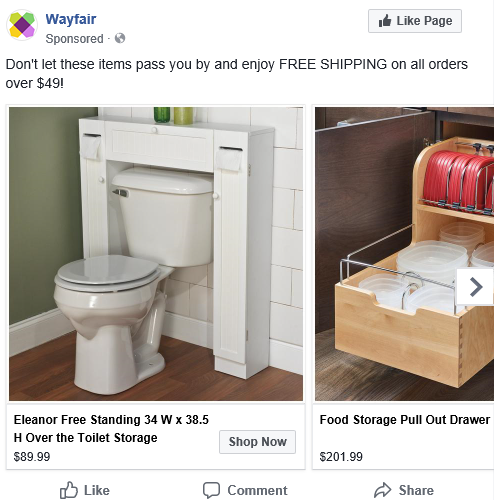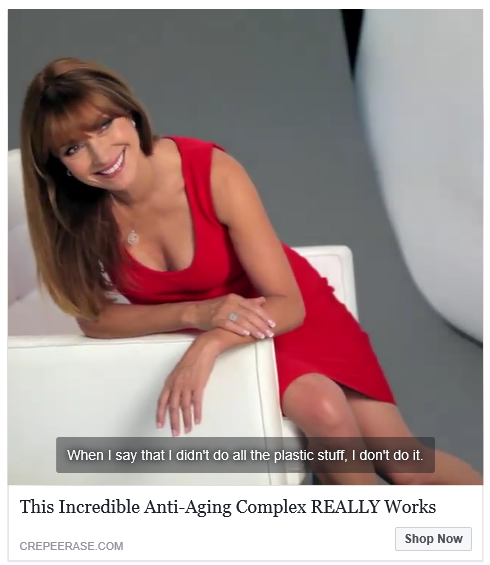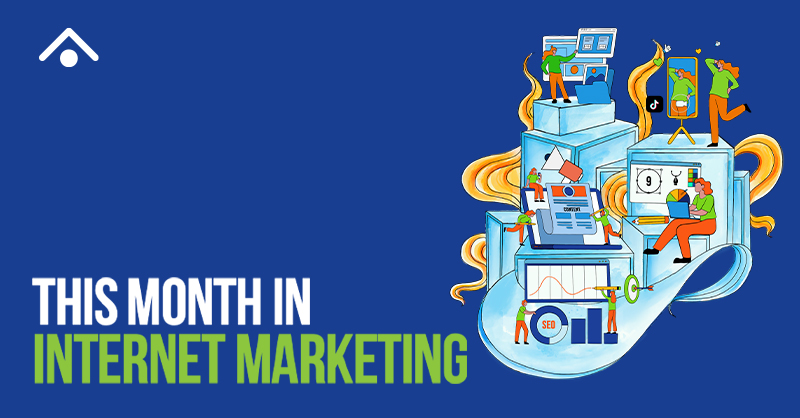We're always making an online purchase or visit a site for information. Then we see ads in our Facebook newsfeed from these businesses. It’s called re-targeting.

But Facebook can be used for far more than just targeting those who have purchased in the past or shown interest. There is a much larger audience out there that may not even know you exist. And you can draw them in by combining your content with Facebook ads.
Here's how it's done:
First, a Paradigm Shift
The mistake that many marketers make is that they use their social media platforms and their blog posts to connect with their target audience, and they use Facebook ads to sell their products or services to them. It’s time to think about how Facebook ads can actually make those connections and relationships the way that content does. And this is what this guide is all about – using Facebook ads to educate, entertain and inspire, just as like your content. Introducing your brand comes later.
Perhaps you sell home décor products. You could buy a lot of Facebook ads featuring those products. And you may get some sales, but what if your Facebook ads took a different approach? What if you were to educate your audience through your ad?
When you do this, you draw in not just that tiny percentage that we call “impulse buyers,” but as well those fence-sitters and even those who were not thinking about how they might change their décor but who now is, after reading your content.
The goal is to provide value to readers, that is, what you can offer them other than your product. Show Facebook viewers how you can help them. For example, in the home décor business, how might you help a homeowner transform a boring, long wall into a focal point of a room? How might they make a tiny bathroom look bigger? You have written blog posts on these problems, so your ad should actually provide a “teaser” and a link to those blog posts. This is how you begin to develop trust and a relationship.
Consider short videos rather than text – videos in which you show yourself and speak to the value you offer with a blog post that they can link to. The video acts as a “teaser” for better things to come.
Guide to Combining Content and Facebook Ads:
1. Begin with Ads that Generate Awareness
Your goal here is to get your audience to warm up to you. This is where you want to promote quality content that you have created that already exists on your website or blog.
According to Keith Krance, social media advertising consultant and co-author of The Ultimate Guide to Facebook Advertising, you should spend 20-30% of your Facebook advertising budget on this type of advertisement.
These ads may be in the form of “teasers” for your content - teasers that will get readers to click through to the valuable content that you have already produced. Here is an example from a local TV station in St. Louis, Missouri that wants to show users that they can provide valuable information and advice:

The goal, of course, is to increase your audience. In so doing, it will ultimately increase advertising revenue. The key word here is “ultimately.”
And this is one of the important points that Krance makes. You may not see immediate results from these awareness ads, but over time, they will make a big difference.
Choose a couple of pieces of your best content and create Facebook ads that promote them, not your product or service.
Then, track the results of those ads. You can also do A/B testing; creating two ads and seeing which one gets better results. Then you will have information about how to make your next ads better.
2. Conversion/Sharing Ads
These are ads that ask users to do more than just consume your content. You want them to do more – you want them to take action.
These can be of the same type as the awareness and relationship-building ads, but you add a CTA (a call to action). What is the next step for the user? Do you want them to share your content with others? What incentive can you provide?
Videos are a great method for conversion ads. Your goal is the same – educate, entertain, or inspire. The other important element is to give users the information that their friends do not have. Then, they can share your information with their friends.
When you launch a conversion ad, your goal is to get click-throughs to a page – your content. But, at the end of that content is your CTA – to share, to subscribe to your newsletter, or ask to provide their email address and other contact information.
Still, you are not asking for them to buy. You are solidifying your relationship, generating more goodwill, and pushing users to take action.
Once you have their email address, you are ready to begin a targeted campaign that personalizes your message and presents your product or service. By this time, the lead(s) knows you, has been given valuable information and has a level of trust.
Your target may still not be ready to purchase. That’s okay. Your content has drawn them in, and you can provide more. When they are ready to make a purchase, you will be their first choice!
3. Re-Targeting
These are the ads that are product or service-based. Using the right tools, you will be able to target your Facebook ads to those who have already connected with you and familiar with your content. These ads will direct your targets to read more information about your product. And that information will show both the value of your product but also why it is a “standout” among all similar ones.
What you want the customer to do is click-through to your sales or purchase page directly from the ad in their newsfeed. This is because add a pixel to your mobile or desktop's IP which follows you around the Internet.
Here is an example from a company called Crepe Erase that sell anti-aging skin products. They tracked the people who have responded to its earlier content and is now ready to push for a sale. Notice the “Shop Now” box in the lower right corner.

4. Segmenting Your Audience
Here’s where Facebook ad manager comes in. You can target what Krance calls warm and cold audiences – those who have accessed your content and those who are of the same demographic characteristics but who have not engaged with previous ads.
You have the ads – awareness, conversion, and re-targeting. Target these ads based upon the “temperature” – cold, lukewarm, and warm.
When you go after cold audiences, remember this: they don’t know you. Creating a video ad featuring you and your product is compelling content. People love stories and you can tell yours while you focus on the value you provide. If you want an example of how this is done well, take a look at the explainer video for Dollar Shave Club. Not only does it feature one of the owners, but it is entertainment on steroids while promoting the value of this product/service. Given that it got millions of views and thousands of orders within 48 hours shows how a cold audience can become very warm, very quickly.
5. Reaching an International Audience
Facebook is banned in North Korea and Iran. But for the rest of the world, it's the most popular social media platform with hundreds of millions of users every month. Depending on your product or service, you may want to reach out to foreign audiences. In this case, find a professional service that has the pros you need to translate content for you – both your ads and the content you are directing viewers to. This way you can quickly expand your reach and generate qualified leads.





